Castela emoryi, Crucifixion Thorn
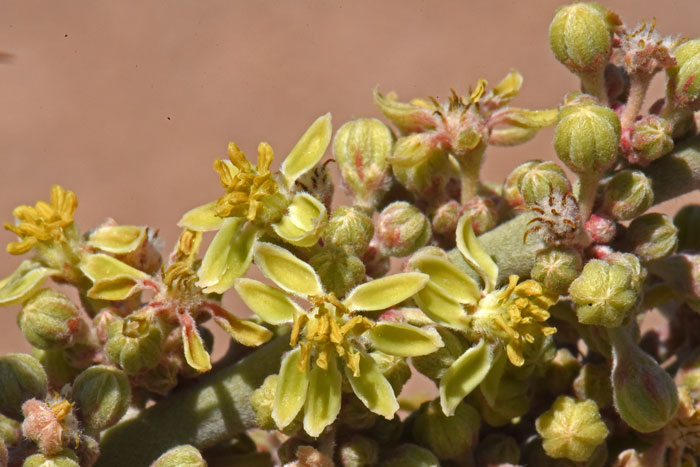
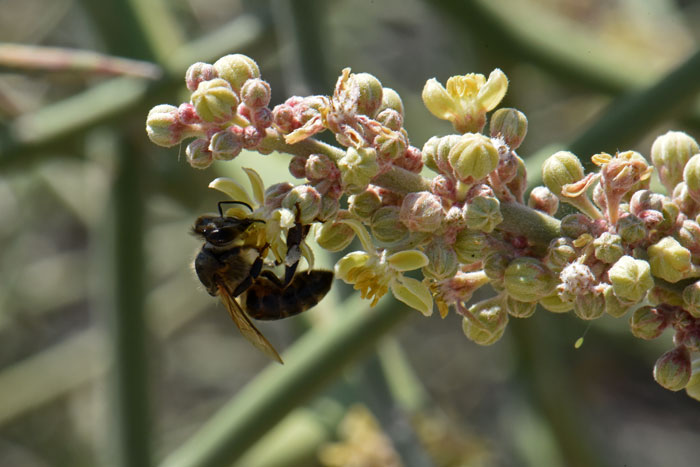
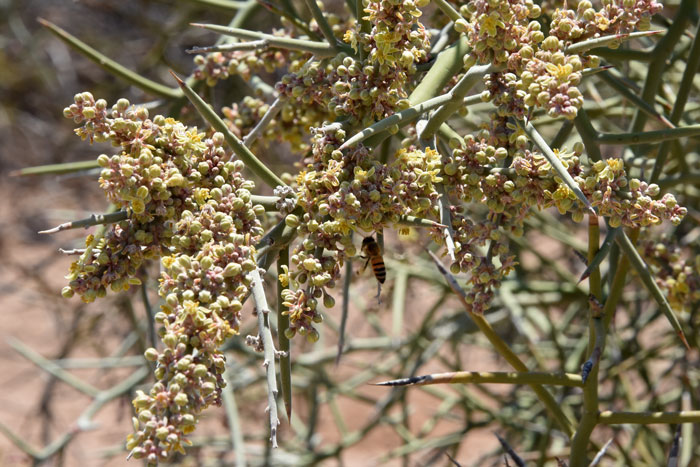
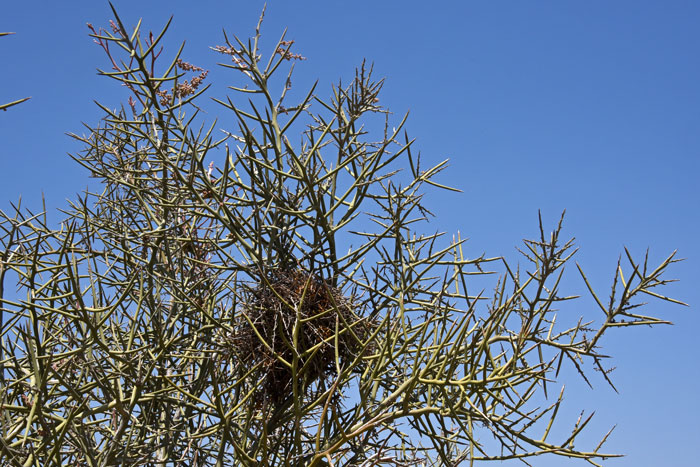
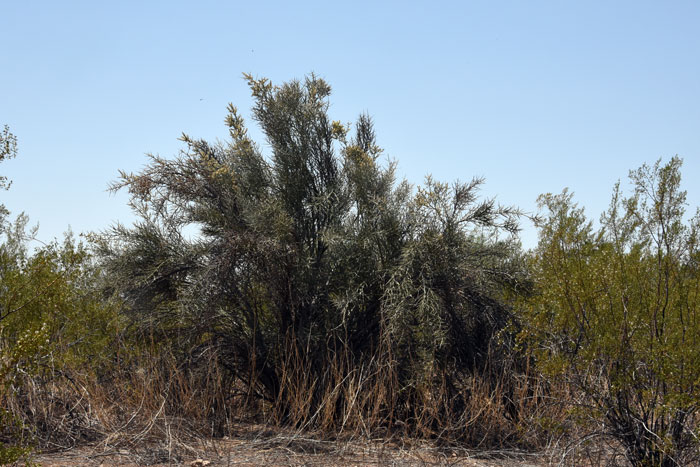
Scientific Name: Castela emoryi
Common Name: Crucifixion Thorn
Also Called: Crucifixion Thorn, Emory's Crucifixion-thorn, Holacantha (Spanish: Corona de Cristo)
Family: Simaroubaceae, Quassia Family
Synonyms: (Holacantha emoryi)
Status: Native
Duration: Perennial
Size: Up to 12 feet more or less; much smaller in California, less than 3 feet.
Growth Form: Shrub or tree; plants are large deciduous trees; grotesque in appearance, branches intricate, short, stout, sharply spinose branches; new growth densely puberulent.
Leaves: Green; greatly reduced to small deciduous scales; leaf margins entire.
Flower Color: Greenish-yellow; inflorescence a panicle; petals often 7 or 8; fruit clusters persist for multiple years each with a different coloring; fruits flat-topped, base somewhat rounded.
Flowering Season: June to July in Arizona; California April to October.
Elevation: 2,000 or lower; Arizona and California.
Habitat Preferences: Frequent but not abundant on desert plains, dry gravelly washes, slopes.
Recorded Range: Castela emoryi is relatively rare in the United States where its distribution is limited to southwest Arizona and far southeast California. It is also native to northwest Mexico.
North America & US County Distribution Map for Castela emoryi.
U.S. Weed Information: No information available.
Invasive/Noxious Weed Information: No information available.
Wetland Indicator: No information available.
Threatened/Endangered Information: Castela emoryi is listed by California and Arizona. In California, Castela emoryi is "fairly endangered" and listed both as an S2 species, Imperiled and S3 species Vulnerable; In California this species is "Threatened by solar energy development and military activities. Possibly threatened by road maintenance and herbicide use."
In Arizona, Castela emoryi, Crucifixion Thorn is "Salvage restricted".
In the Southwestern United States, Arizona, California, Utah and Texas each have 1 species of Castela, Nevada and New Mexico have 0 species. All data is approximate and subject to taxonomic changes.
Comments: Castela emoryi, is one of 3 shrub-like trees in Arizona and California with the same common name “Crucifixion Thorn”; included here is Canotia holacantha and Koeberlinia spinosa. All 3 species are found in Ironwood Forest National Monument, Pima and Pinal Counties.
In Southwest Desert Flora also see Crucifixion Thorn, Canotia holacantha.
Crucifixion Thorn flowers are pollinated by insects, particularly bumble bees.
The type species for Castela emoryi (=Holacantha) is from an area between Tucson and the Gila River (Emory)
Castela emoryi has been used as a dermatological aid by the Yavapai people.
Yavapai Drug, Dermatological Aid, Milky fluid of pulverized buds rubbed on face to stop pimples.
See ethno-botanical uses at Native American Ethnobotany, University of Michigan, Dearborn.

